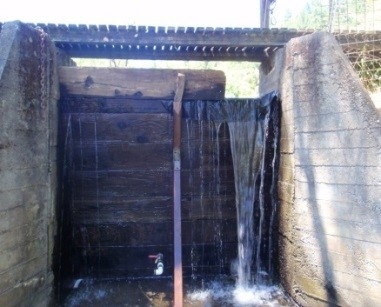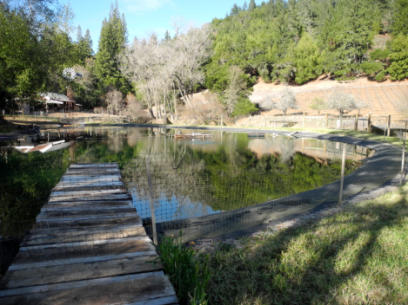Grape Creek is a small stream that flows through the picturesque Dry Creek Valley in Healdsburg, surrounded by vineyards, rustic wineries, and a solid community of residents and grape growers—including many who have roots in this valley dating back several generations. Grape Creek—a tributary to Dry Creek, which flows into the Russian River—is home to several aquatic species, including endangered coho salmon and threatened steelhead trout. Despite the abundance of natural resources that Grape Creek supports, like many streams in the Russian River watershed, it becomes intermittent in the summer months when surface flows decrease and demand for water increases.


UC's primary role in this effort is to conduct a multi-year study designed to correlate instream flow and other environmental conditions to oversummer survival of juvenile salmon. Data from this study has given partners a better understanding of how much water coho need to survive the summer months in Grape Creek. Building on this science, the Partnership worked with landowners to implement several streamflow improvement projects and significantly reduce frost protection diversions in the watershed. Projects include the construction of an off-stream pond that eliminates irrigation use of a streamside well, installation of a frost protection fan in order to eliminate a direct diversion and on-stream dam (which was a fish passage barrier), a conservation project to reduce water use by installing a steam cleaning machine and three frost fans, and construction of an off-stream pond that eliminates the use of an on-stream pond for frost protection and irrigation water. None of this would have been possible without the invaluable cooperation and contributions of streamside landowners, some of whom used their own resources for project implementation.
Thanks in good part to this work and the exemplary cooperation of local landowners, Grape Creek was named one of the National Fish Habitat Partnership (NFHP)'s Waters to Watch in 2013. It received this honor due to the importance of its fish species and the collaborative conservation action occurring within the watershed. Last month, NFHP released a video highlighting this collective work.
In many ways, the Grape Creek watershed is a microcosm for the many types of water needs and potential conservation projects that can be implemented across California's coastal streams. UC and the Partnership are using the lessons learned in Grape Creek to continue this effort in other streams within the Russian River basin.
You can read more about the activities of UC's Coho Salmon Monitoring Program and the Partnership.